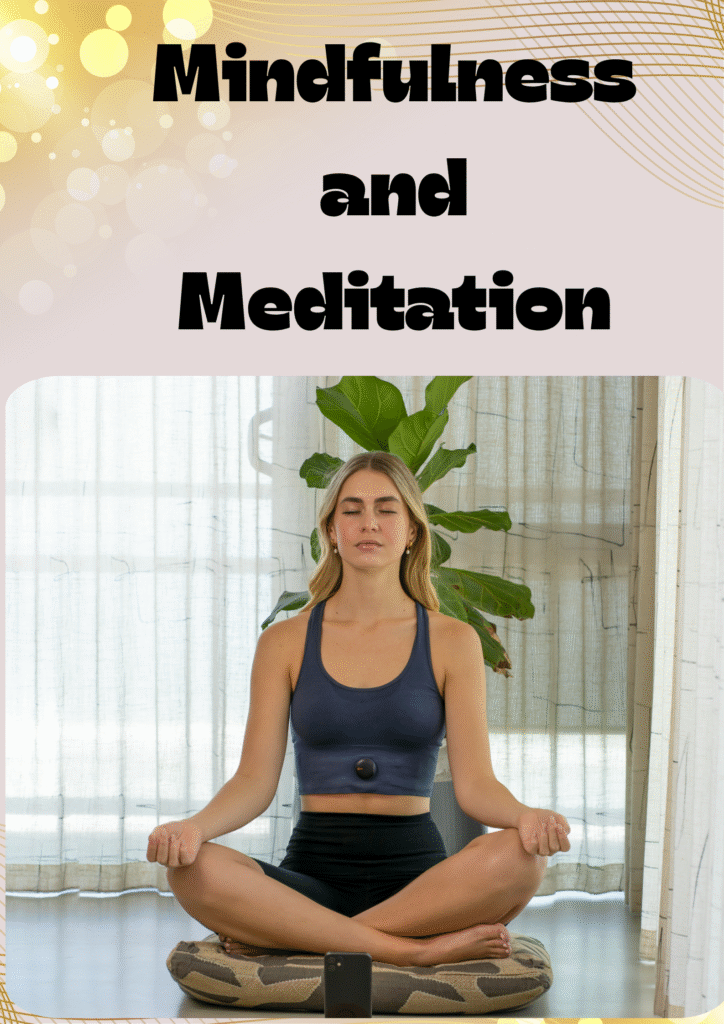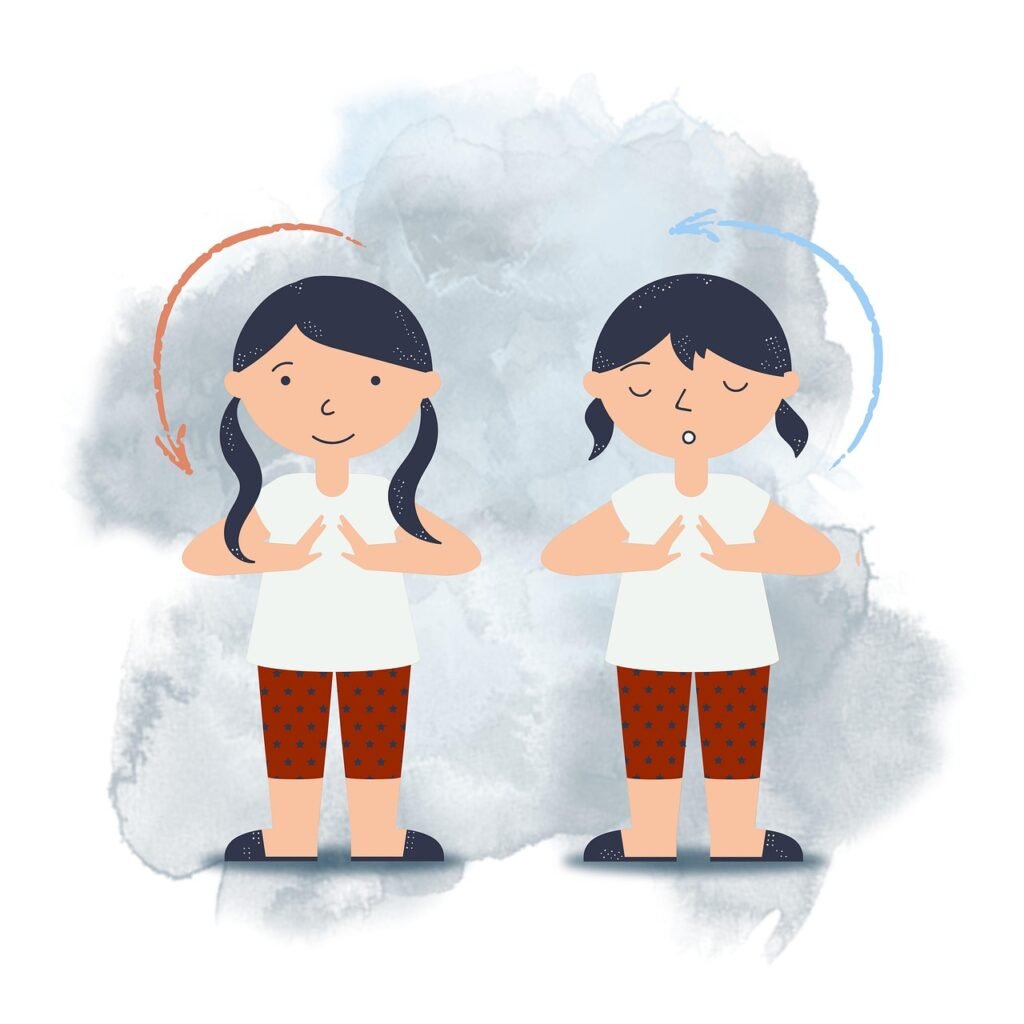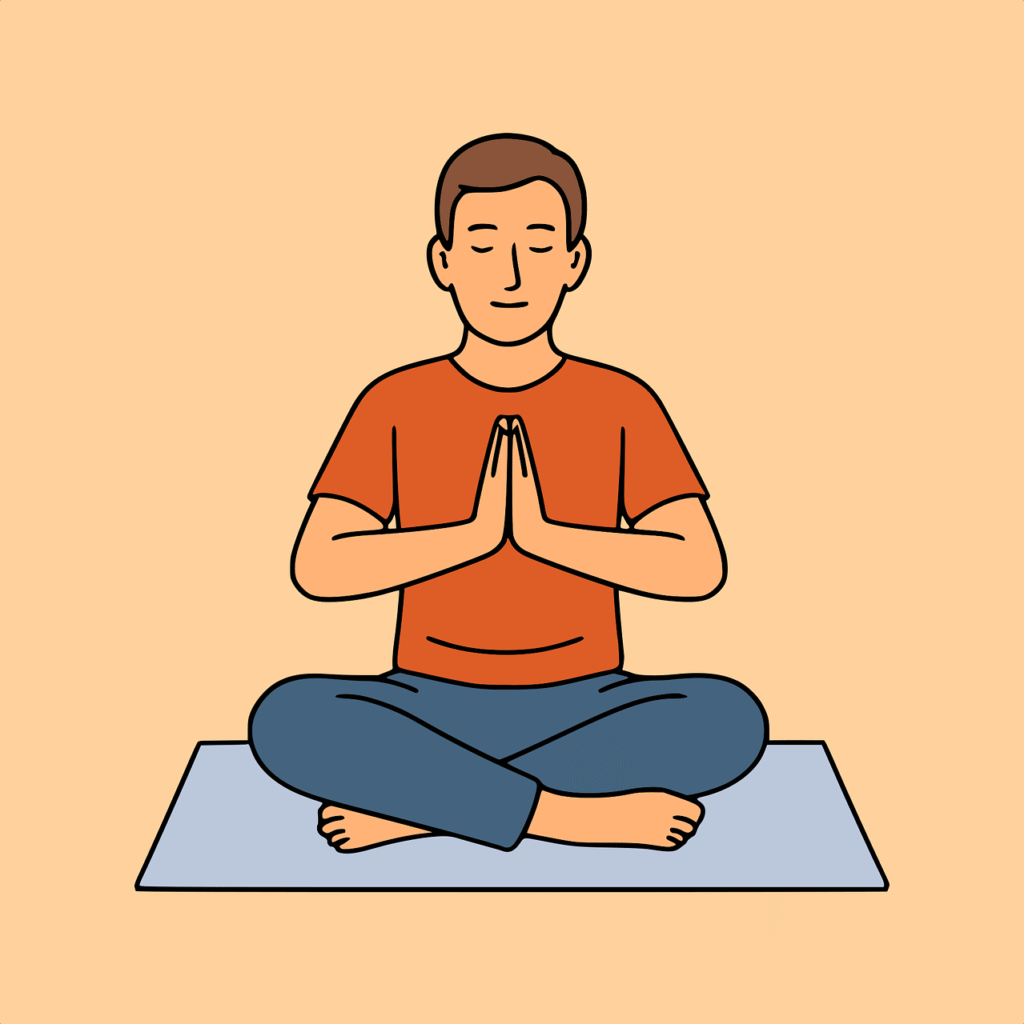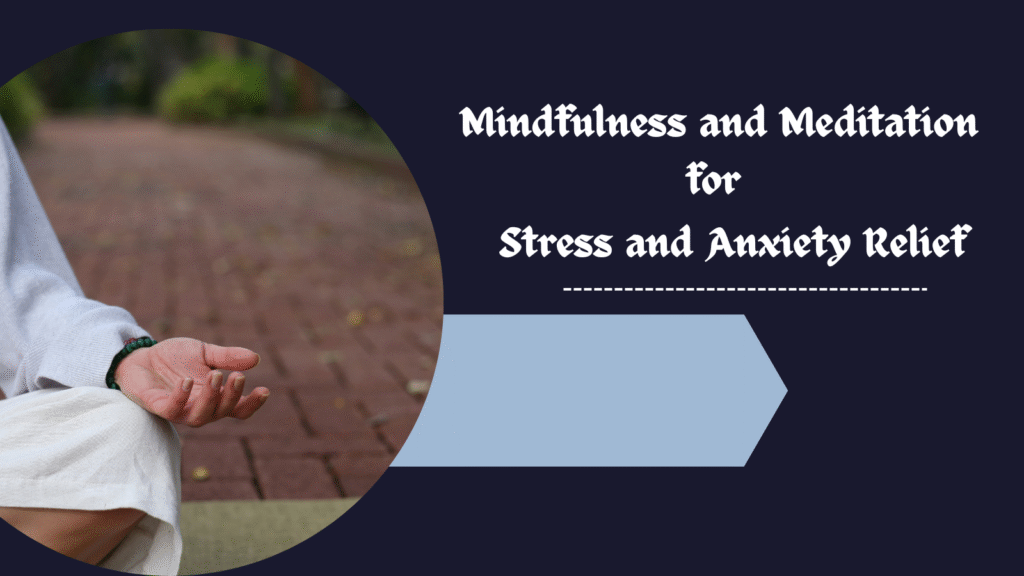Introduction
In today’s fast-paced world, stress and anxiety have become constant companions for many. The pressures of work, social life, and technology can leave us feeling overwhelmed, disconnected, and mentally exhausted. But there’s a simple, powerful solution that’s gaining global recognition: mindfulness and meditation.
These ancient practices, rooted in Eastern traditions and now widely accepted in Western medicine and psychology, offer tools for grounding, focus, and emotional regulation. In this article, we’ll explore mindfulness and meditation in depth—what they are, how to begin, and how specific techniques like guided meditation, body scan, and breathwork can help reduce anxiety and restore calm.
What is Mindfulness?
Mindfulness is the practice of paying full attention to the present moment with an attitude of openness and non-judgment. It means observing your thoughts, emotions, and sensations as they arise—without trying to suppress or change them.
Mindfulness isn’t about achieving a certain state or shutting off your thoughts. It’s about developing awareness and being present in whatever you’re doing—whether that’s eating, walking, or simply breathing.
Key elements of mindfulness
Awareness: Being conscious of your inner and outer experiences
Acceptance: Allowing thoughts and feelings without judgment
Non-reactivity: Observing without instantly reacting
Practicing mindfulness helps create a space between stimulus and response, giving you the ability to act with clarity rather than react impulsively.

What is Meditation?
Meditation is a structured practice used to train attention and awareness. It’s often a tool to cultivate mindfulness but can also include visualization, chanting, or focusing on a mantra or the breath.
Think of meditation as the gym for your mind. Just as physical exercise strengthens the body, meditation strengthens mental clarity, emotional resilience, and focus.
Types of meditation include
Mindfulness Meditation: Focusing on the present moment
Loving-Kindness Meditation: Sending positive energy toward yourself and others
Body Scan Meditation: Checking in with physical sensations
Breath Awareness Meditation: Focusing on the rhythm of your breath
Mantra Meditation: Repeating a calming word or phrase
Even just 5–10 minutes of daily meditation can lead to profound changes in how you experience stress and anxiety.

Why Are Mindfulness and Meditation Effective for Stress Relief?
Chronic stress leads to physical and emotional symptoms like muscle tension, headaches, racing thoughts, irritability, and fatigue. Over time, this can contribute to heart disease, immune dysfunction, and mental health issues.
Mindfulness and meditation help calm the nervous system by reducing the stress hormone cortisol. Regular practice has been shown to:
Lower blood pressure
Reduce anxiety and depression
Improve sleep
Increase focus and attention span
Enhance overall well-being
Through consistent practice, you build mental flexibility, which helps you bounce back more easily from stressors and stay calm under pressure.

Guided Meditation for Beginners
For those new to meditation, guided meditations are an ideal entry point. A teacher or app leads you through the session, offering prompts and encouragement.
Here’s a simple 5-minute guided meditation you can try:
5-Minute Guided Meditation Script
Find a quiet space where you won’t be disturbed. Sit or lie down comfortably.
Close your eyes and take a deep breath in through your nose… and out through your mouth.
Gently bring your attention to your body. Notice how it feels—no need to change anything.
Now shift your focus to your breath. Notice the inhale… and the exhale.
If your mind wanders (it will!), gently guide it back to the breath.
As you breathe, silently repeat: “Inhale, calm… Exhale, release.”
Stay with this rhythm for a few more moments.
When you’re ready, open your eyes and reorient yourself.
You can find thousands of guided meditations on platforms like Insight Timer, Headspace, or Calm.

The Body Scan Technique
A body scan is a mindfulness practice that involves mentally scanning yourself from head to toe, noticing sensations without judgment. It promotes relaxation, increases body awareness, and helps release physical tension caused by stress.
How to Do a Body Scan Meditation
- Lie down in a comfortable position and close your eyes.
- Begin by focusing on your toes. Notice any sensation—warmth, tingling, numbness.
- Slowly move your attention upward: feet → ankles → calves → knees → thighs.
- Continue up through your pelvis, stomach, chest, shoulders, arms, hands, neck, and head.
- As you move through each body part, acknowledge what you feel without labeling it as good or bad.
- If you notice tightness, breathe into that space and invite it to soften.
- A body scan can take anywhere from 5 to 30 minutes. Practicing before bed is especially effective for promoting restful sleep.

Breathing Focus Exercise
The breath is a natural anchor for mindfulness. When you’re stressed, your breathing becomes shallow and rapid. Deep, intentional breathing tells the nervous system to relax.
Here’s a simple breath awareness practice:
Basic Breathing Exercise
Sit comfortably and close your eyes.
Place one hand on your belly, one on your chest.
Inhale slowly through your nose for 4 seconds. Feel your belly rise.
Hold for 2 seconds.
Exhale through your mouth for 6 seconds. Feel your belly fall.
Repeat for 2–5 minutes.
You can also try box breathing (popular with Navy SEALs):
Inhale 4 counts → hold 4 → exhale 4 → hold 4
Focusing on your breath shifts your attention away from racing thoughts and into the present moment.

Benefits of Mindfulness and Meditation on Anxiety
Mindfulness and meditation are especially powerful for managing anxiety, which often involves ruminating over the future or past.
Scientific Benefits for Anxiety Reduction:
Reduced amygdala activation: The brain’s fear center becomes less reactive.
Increased prefrontal cortex activity: Improves decision-making and emotional control.
Greater emotional regulation: Respond to anxiety triggers more calmly.
Lower baseline cortisol levels: Reduced physiological stress responses.
Research shows that consistent mindfulness meditation practice can reduce symptoms of generalized anxiety disorder (GAD), panic attacks, and social anxiety.
How to Make It a Daily Habit
Starting a mindfulness or meditation habit doesn’t require a huge time commitment. Consistency is more important than duration.
Tips to Get Started
Set a reminder for the same time daily (e.g., after waking up or before bed)
Start with just 2–5 minutes
Use a guided app or YouTube video
Track your progress in a journal or habit app
Join a local or online meditation group for accountability
Remember: it’s normal for your mind to wander. The goal is not to stop thoughts but to return to awareness again and again.
Long-Term Benefits of Mindfulness and Meditation
While immediate benefits like calm and clarity are great, the long-term effects are even more powerful. Studies show that regular practice leads to:
- Increased emotional intelligence
- Better resilience to stress
- Improved relationships
- Enhanced focus and productivity
- Stronger immune system
- Slower aging of the brain
Some experienced meditators even report a sense of deep joy and inner peace that becomes part of their daily life.
Conclusion:
Reclaiming Calm in a Busy World
Mindfulness and meditation offer us the tools to slow down, reconnect with ourselves, and find peace amid chaos. Whether you’re battling anxiety, dealing with work stress, or simply craving more inner balance, these practices can be life-changing.
You don’t have to retreat to a mountain cave or become a monk. Just a few mindful minutes each day can lead to transformation.
So take a deep breath… and begin.
